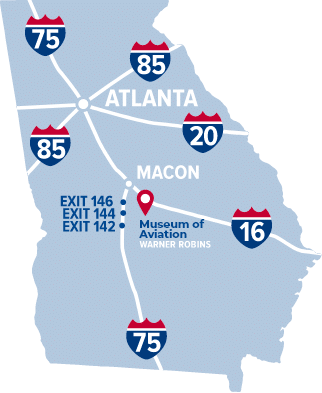The AT-6 advanced trainer was one of the most widely used aircraft in history. Evolving from the BC-1 basic combat trainer ordered in 1937, 15,495 Texans were built between 1938 and 1945. The USAAF procured 10,057 AT-6s; others went to the Navy as SNJs and to more than 30 Allied nations. Most AAF fighter pilots trained in AT-6s prior to graduation from flying school. Many of the Spitfire and Hurricane pilots in the Battle of Britain trained in Canada in Harvards, the British version of the AT-6. To comply with neutrality laws, US-built Harvards were flown north to the border and were pushed across.
In 1948, Texans still in USAF service were redesignated as T-6s when the AT, BT and PT aircraft designations were abandoned. To meet an urgent need for close air support of ground forces in the Korean Conflict, T-6s flew “mosquito missions,” spotting enemy troops and guns and marking them with smoke rockets for attack by fighter-bombers.
Robins AFB provided depot repair and logistics support for all T-6s operating at the numerous training bases in the Southeast during WWII. The T-6G on display was delivered to the 3545th Basic Pilot Training Wing at Goodfellow AFB, Texas in March 1951. It served at various locations before being removed from service in 1957. It was then provided to the Spanish Air Force under the Military Assistance Program where it flew until the early 1980s when it was retired. The Museum acquired the aircraft through disposal channels in 1984 when it was delivered to Robins AFB for preservation and display.








